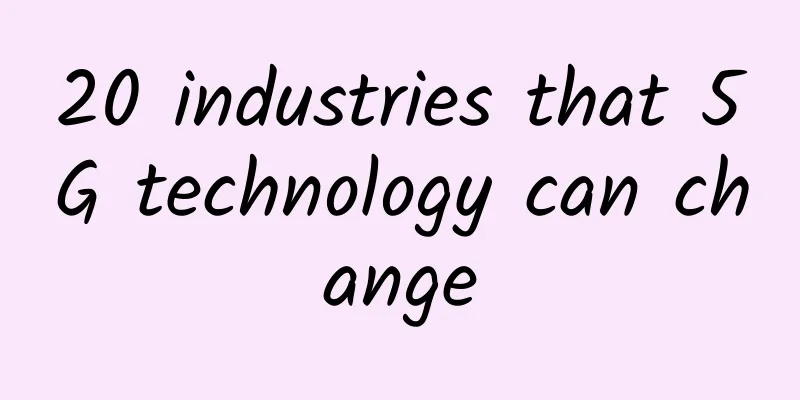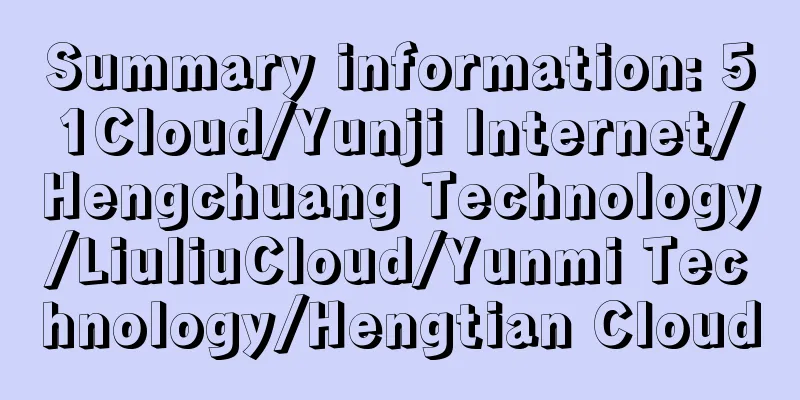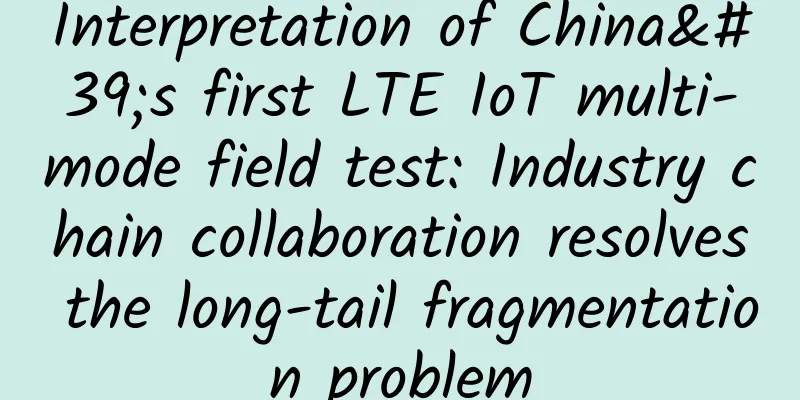20 industries that 5G technology can change

|
5G is changing the way we connect. The technology enables faster data speeds, up to 10 times faster than what was achievable with previous-generation standards, as well as lower latency and greater network capacity. As a result, 5G creates huge opportunities for a wide range of industries, but also lays the foundation for massive disruption. According to Viavi Solutions, as of June 2021, commercial 5G services have been deployed in more than 1,500 cities in more than 60 countries around the world. 5G will become even more important as the number of IoT devices increases. According to IoT Analytics, the number of IoT devices (which will rely on 5G to transmit large amounts of data in real time) is expected to grow from 12 billion in 2020 to more than 30 billion by 2025, which is more than 4 devices for every person on the planet. Industries across the board are already scrambling to leverage 5G technology to avoid being disrupted, and the number of times global business giants mention 5G in earnings calls has skyrocketed in recent years. From enabling remote robotic surgery and self-driving cars to improving crop management, 5G is expected to transform many of the world's largest industries. Here are 20 industries that 5G technology could change: manufacturingKey factors:
The impact of 5G on manufacturing could be huge. IHS Markit estimates that improved connectivity through 5G will create $13 trillion in economic value across industries worldwide by 2035. One-third of this is expected to come from manufacturing. 5G technology can help manufacturing operations become more flexible and efficient while improving safety. This will enable manufacturers to build "smart factories" that rely on automation, augmented reality and the Internet of Things. As 5G powers the vast number of IoT devices and sensors around the factory, artificial intelligence can be more deeply integrated with operations. On a fast-paced assembly line, even a delay of a few microseconds can cause costly disruptions for manufacturers. With the introduction of 5G technology, industrial robots will be able to communicate more reliably and with less latency than before. Through 5G mobile networks, wired and wireless robots can also be remotely controlled, monitored, and reconfigured. This next-generation wireless technology will also lead to greater adoption of augmented reality (AR), as 5G networks provide the high bandwidth and low latency needed to continuously enhance image quality. In a factory setting, this means AR can support training, maintenance, construction, and repair. Ericsson began testing augmented reality troubleshooting capabilities at its plant in Tallinn, Estonia in January 2018. Through the AR application, technicians can observe the parts that need maintenance and call up the relevant schematics and instructions within their field of view, greatly reducing the time required to complete the repair. Ericsson is also working with aircraft engine manufacturer MTU AeroEngines and Germany's Fraunhofer Institute for Production Technology to test 5G technology. Ericsson said this move could save about $30 million for a factory. Automotive OEMs are also testing how 5G will change manufacturing. For example, Daimler-owned Mercedes-Benz, in partnership with Telefónica Germany and Ericsson, opened a 5G-powered car factory in Germany in late 2020. The factory’s 5G network helped support the construction of the site through AR/VR applications and was used to track goods in and out of the factory, supporting more than 400 automated guided vehicles used throughout the plant. As networks continue to expand 5G access, manufacturing use cases are expected to surge. Given the potential economic value that can be generated, 5G will become an integral part of factories around the world. Energy & UtilitiesKey factors:
5G can bring innovative solutions in energy production, transmission, distribution and use. It is also expected to unleash the functionality and efficiency of the next wave of smart grids. As more smart grids are connected, energy management will become more efficient, reducing power peaks and overall energy costs. Faster connectivity speeds can enable the grid to be managed more efficiently, reducing downtime. For example, in the event of a power outage, a 5G-equipped smart grid can use data and sensors to quickly gain insight into the problem. The technology could also lead to a more stable energy supply, as suppliers will have the ability to make smarter decisions about power distribution based on vast amounts of data from 5G-enabled smart sensors. Better connectivity also has benefits for consumers. Streetlights connected via 5G technology and equipped with sensors will dim when there are no people or vehicles on the road, saving energy. According to a report by Accenture, this approach could save the United States up to $1 billion per year. As 5G enables better connectivity between devices, more homes are likely to be equipped with smart meters. These meters can provide insights into the energy consumption of different appliances and devices, giving homeowners more information to manage their energy use. Verizon believes the energy industry will be a key showcase for 5G's potential. The company said the industry will be one of the "most important test cases" for 5G technology. 5G is also more energy efficient than previous generations of wireless cellular technology. Research conducted by Nokia and Telefónica suggests that 5G technology is 90% more energy efficient per unit of traffic than 4G networks – although 5G networks are expected to handle more traffic and will require a lot of new equipment, which could dampen the overall energy savings potential. However, 5G’s energy efficiency could significantly extend the life of battery-reliant devices, potentially up to 10 years. This could further help make large-scale deployment of IoT sensors a more practical solution for the energy industry. 5G will also support the use of drones to monitor and maintain elements of the grid, such as power lines, leading to improved grid uptime, reduced inspection costs and more sustainable operations. For example, in early 2021, Spanish energy company Naturgy launched a project in partnership with Vodafone and long-range drone developer FuVeX to inspect its power lines using remote-controlled drones operating beyond line of sight. Naturgy aims to bring these capabilities to all of the thousands of kilometers of wires in its grid. FuVex says the project could reduce carbon emissions by more than 6 million tonnes through more efficient operations. agricultureKey factors:
With the world’s demand for food set to increase by 70 percent in 2050 compared to 2009 due to population growth, according to the UN Food and Agriculture Organization, 5G is likely to have a significant impact on the agricultural sector, particularly in terms of increasing crop yields – a critical task. 5G can provide farmers with real-time data to monitor, track and automate their agricultural systems, improving profitability, efficiency and safety. In a high-stakes industry like agriculture, increased yields and precision are critical, especially as climate change poses new threats to farmers around the world. Many farms already use 4G-connected sensors, but 5G will give farmers the opportunity to get faster, more accurate information in the field, which will help improve production outputs such as crop yields and make it easier to prevent common crop and wildlife diseases. Companies such as SlantRange are already providing drone services to farmers to understand their crops. With 5G connectivity, such services can operate more accurately. For example, autonomous tractors may eventually use 5G to pair with drones to guide their work, such as identifying which parts of a field need fertilizer. Similarly, machinery maker Blue River Technology has used chipmaker NVIDIA’s 5G edge platform to power its AI-based “see and spray” technology. This approach equips tractors with cameras that can identify weeds and crops, then spray the appropriate solution to kill or nurture the plants. With the development of 5G technology, precision agriculture is expected to make great progress. For resource-intensive crops, factors such as soil health need to be monitored to help improve yields. The process of synchronizing precision farming using a 4G network may take about a minute. With 5G, this process can be shortened to less than a second, according to the John Deere Technology Innovation Center. 5G also drives the use of IoT devices in agriculture, which will improve agricultural processes such as water management, fertilization, livestock safety and maturity monitoring, crop communications, and aerial crop monitoring. IHS Markit predicts that 5G technology will increase annual output in agriculture, fisheries and forestry by $510 billion by 2035. However, because 5G networks will be deployed in urban areas first, the agricultural industry may have to wait longer than some industries to enjoy the benefits of 5G. RetailKey factors:
Over the past decade, mobile shopping has become extremely popular among consumers around the world. According to eMarketer's forecast, global mobile commerce sales will approach $3.5 trillion this year, and its share of all e-commerce sales is expected to reach more than 70%. This shift to mobile shopping is largely thanks to 4G networks. Imagine how the mobile shopping experience would be impacted if mobile connections were 10 times faster. In addition to speed, 5G opens the door to new data-heavy consumer experiences, such as VR fitting rooms or AR experiences in stores and at home. Today, companies like Sephora use virtual try-on technology to help in-store customers see what specific makeup will look like before buying it, but the product is limited by data streaming restrictions. 5G effectively removes those data restrictions — using AR to try on clothes could soon be a common experience with photo-realistic accuracy. 5G’s low latency enables mobile AR/VR apps to use the technology without inducing motion sickness. This means users can virtually try on a range of clothing from the comfort of their own home, resulting in a better, more personalized customer experience – which also means more spending. In fact, according to a Deloitte survey, 71% of shoppers said they would shop more if they used an AR app. Over the past few years, retailers have invested millions of dollars in smart technologies to help customers shop more efficiently and check out faster, while collecting more data on the customer experience. From in-store analytics to visual recognition-driven shelf monitoring, many technologies in stores of the future will rely on or benefit from the ability to transmit large amounts of data and access high-throughput connections. That’s why 5G will have such a big impact on the way retailers operate. According to Adobe Digital Insights, the connectivity improvements brought by 5G technology could increase retail revenue by $12 billion annually by the end of 2021. Telecom companies have smelled an opportunity to change the way retailers operate. In February 2021, Verizon Business announced a partnership with Deloitte and SAP to develop a new 5G mobile edge computing (MEC) platform. The platform promises to provide retailers with real-time analysis of in-store consumer behavior through a complex network of sensors combined with augmented reality and artificial intelligence. Verizon's platform can also be applied to common retail challenges, such as real-time inventory management. Financial ServicesKey factors:
5G technology is expected to accelerate financial institutions’ digitalization efforts and increase investment in mobile services. For example, the speed increase brought by 5G can allow users to conduct transactions faster and more reliably. In July 2021, Verizon Business and Mastercard announced a collaboration to develop a series of 5G services, including Mastercard's TaponPhone mobile point-of-sale (PoS) product, automated checkout technology in retail stores, and mobile-first bill payment services. 5G connectivity will also allow wearables to share biometric data with financial services to instantly and accurately authenticate a user. This will reduce the time it takes to onboard new customers, approve loans, etc. On the back end, fraud detection tools will have access to more data and be able to work faster. Faster data transfer in financial services means more seamless transactions and processing, whether it's conducting credit checks, processing payments, making trades or transferring funds. This could drive the development and adoption of open banking, which relies on APIs to transfer data from financial institutions to third-party service providers. As mobile-based financial services become more seamless, 5G will drive the adoption of more applications in this area, such as using mobile phones as wallets or using devices such as smartwatches to make wireless payments. Additionally, financial institutions increasingly rely on data collection to create personalized experiences for customers. 5G will make it easier to quickly collect data, leading to more unique and customized services. Some players are betting that 5G will bring better banking services to areas without physical branches. For example, AT&T is reportedly developing 5G-connected mobile branches for banks in the U.S. These wireless branches are envisioned to serve music festivals, pop-up stores, and remote areas that are not well served by banks. Media & EntertainmentKey factors:
5G will disrupt media and entertainment at many levels, including mobile media, mobile advertising, home broadband and TV. It is also critical to improving the experience of emerging interactive technologies such as AR/VR. According to Ericsson, video already accounts for 66% of all mobile data traffic and is expected to grow to 77% by 2026. Streaming video is less likely to stutter or stop due to 5G's low latency. On a 5G network, the average movie download time will be reduced from 7 minutes to just 6 seconds. It is estimated that 5G will save people an average of 23 hours of loading time per month when browsing social media, gaming, streaming music, and downloading movies and shows. This equates to a $1.3 trillion revenue opportunity for media and entertainment companies by 2028, according to a study by Intel and Ovum. 5G will drive new entertainment experiences that are more immersive and personalized, and can be accessed anywhere—not just at home with good Wi-Fi. This can even extend to emerging synthetic media forms such as holograms, virtual characters, and synthetic voices. VR also opens up the possibility of better sharing the viewing experience with others, even if they are not in the same physical space, and can provide more interactive types of viewing experiences, such as immersive 3D experiences. Sports events will become richer. In China, the additional data bandwidth provided by 5G can give viewers more control over the presentation of the game, such as selecting different cameras and watching the game from multiple angles. Viewers can even use 5G-enabled VR/AR technology to experience an immersive event. Meanwhile, on the field, fans could benefit from a more immersive experience, such as using AR to overlay player stats or analysis on top of games, or the ability to call up instant replays even while play is in progress. 5G can even bring huge changes to the way sports are played. For example, the NBA's Phoenix Suns are working with Verizon to develop a 5G-equipped training facility. The facility is equipped with a system of high-definition cameras and sensors that can capture everything from the arc and direction of shots to the length and movement of players' limbs. Trainers can use these insights to drive strategy, player development, and more. HealthcareKey factors:
With lives at stake, healthcare practitioners are forced to make countless rapid calls. Having more data, and being able to access it in real time, allows for more informed decisions. The high throughput and low latency of 5G networks could mean that life-saving decisions can be made more quickly in medical settings, both inside hospitals and remotely. It could also translate into revenue growth: Boston Consulting Group estimates that 5G could bring $104 billion to the U.S. healthcare industry by 2030. Increased data transmission speeds can benefit a wide range of steps in the care process, from high-definition telemedicine video streaming to imaging diagnostics to sharing results with the care team. The healthcare industry also generates a constant stream of data. 5G’s low latency can transmit large amounts of data without causing problems for the rest of the network. In February 2021, AT&T and VA partnered to install 5G network capabilities at the VA Western Healthcare System in Puget Sound, Virginia. The project plans to pilot a variety of 5G services, including tracking personnel and assets across facilities, AR and VR for medical training and pain management, and surgical assistance using AR overlays for visual guides during operations. In 2020, the VA also partnered with Verizon, Medivis, and Microsoft to bring 5G capabilities to its Palo Alto, California, facility, specifically surgical technology using Microsoft's augmented reality headsets. Other companies, such as OssoVR, are using VR technology to provide ultra-realistic training modules. Surgeons can practice complex techniques and keep up with the latest robotic technology instead of training with outdated or obsolete equipment. Remote robotic surgery is also being improved. Because these procedures require high-definition image streaming, low-latency and high-throughput communications are essential. 5G networks can facilitate remote surgery by enabling latency-free and ultra-high-speed connections. In 2019, a surgical team in China remotely inserted a stimulation device into a patient’s brain nearly 1,900 miles away. In the U.S., Corindus, acquired by Siemens Healthineers for $1.1 billion in October 2019, has been testing cardiovascular procedures using its CorPath GRX robotic system, which uses multiple network types, including 5G. Ultimately, the ability to access care remotely, whether through wearables, remote surgery or telemedicine, will make healthcare more accessible, especially for patients in rural areas. 5G technology can also help drive more proactive healthcare, such as better and earlier detection of disease, leading to improved medical outcomes and cost savings. TransportationKey factors:
Connecting public and private vehicles with 5G could change the way people and goods are transported around the world. 5G technology could improve visibility and control of transportation systems, from buses to private logistics fleets. As 5G networks become more widespread, cities will have more options for gaining real-time, end-to-end visibility into transportation systems. For example, using 5G, cities can implement real-time route planning based on traffic or weather conditions. Public transportation workers can also use IoT sensors to monitor the health of trains and other vehicles. At the same time, smarter traffic management will save drivers time while reducing unnecessary fuel consumption when vehicles stop at red lights. A study by Carnegie Mellon University found that traffic lights that integrate real-time data on traffic patterns can reduce the number of stops by 40%, emissions by 21%, and commute time by 26%. 5G will also play a key role in cellular vehicle-to-everything (C-V2X) communications. In a C-V2X system, rather than the car deciding how to act alone, the driverless car communicates with other vehicles and parts of the physical environment, such as traffic lights and construction signs, to coordinate actions safely and efficiently. In the emerging field of autonomous vehicles, C-V2X communications are critical to improving road safety, traffic flow, and more. Real-time communication is critical for vehicles, as milliseconds can make the difference between a narrow escape and a fatal collision. Achieving this high-speed connectivity requires vehicles to transmit large amounts of data between each other without any delay. 5G networks can achieve this goal with their low latency. To this end, researchers believe that 5G may help achieve true autonomous driving in the future. By 2027, the number of automotive 5G connections is expected to reach 96 million, according to telecommunications consulting firm AnalysysMason. The availability of 5G means that the density of sensors in the environment will be higher, and data will be transmitted from centralized servers to these sensors and vehicles faster, which will equip AI tools with the real-time data needed to keep things running smoothly. Future self-driving cars can generate up to 2MG of data per week on average, and it is not feasible to move all this data to the cloud or regional servers using Wi-Fi or 4G today. AR/VRKey factors:
The future of AR and VR depends on 5G networks. Currently, augmented reality (AR) and virtual reality (VR) technologies are limited in many ways. Headsets are heavy, uncomfortable, and difficult to wear for long periods of time. Data transmission speeds and latency are not yet at a level where users can enjoy a seamless, fully immersive experience. Compared to traditional media, VR and AR applications have higher fields of view, resolutions, and frame rates, requiring more bandwidth and lower latency levels to deliver a consistent experience to viewers. Typical 4G network latency is about 60 milliseconds, which is too slow for a good VR experience, and even 15 milliseconds can be disorienting and jarring. 5G connectivity could free VR experiences from their reliance on wired, professional indoor environments, meaning these devices can be used in more realistic scenarios. With 10x lower latency, 100x higher traffic capacity, and 100x higher network efficiency, 5G can solve many of the current issues surrounding the technology. This is critical for the mass adoption of AR and VR. With the adoption and greater convenience of AR/VR technologies, new digital experiences will become possible. For example, Niantic, the developer of Pokémon Go and other augmented reality games, announced the formation of the Planet-Scale AR Alliance in September 2020, which brings together mobile operators such as Deutsche Telekom, Orange, SK Telecom, TELUS, and Verizon to create AR experiences that rely entirely on 5G connections. In March 2021, the alliance launched a real-time shared AR game "Codename: Urban Legends", claiming that due to 5G, the game has 10 times lower latency and can accommodate 10 times more players at the same time. InsuranceKey factors:
5G can help all insurance companies make decisions more effectively and efficiently. With more efficient data sharing, health and life insurance companies can make more informed and accurate decisions when providing quotes. As wearable medical devices connected to 5G networks become more common, health insurance companies can offer "positive reinforcement" policies that reduce premiums as long as a certain level of activity or fitness is maintained. While remote monitoring exists today, the technology is limited by the network's ability to process large amounts of data. As 5G technology opens up a new era of self-driving cars, real-time data and reports can be sent to auto insurers immediately after an accident. Similarly, sensors that detect how safely someone is driving can influence insurers' pricing decisions and allow for behavior-based policies such as "pay for the way you drive." With greater connectivity and better data granularity, insurers can offer more services to their customers while improving operational efficiency. 5G-enabled sensors and devices are also making their way into homes and buildings. Simple smart home devices can help prevent claim-worthy events like pipe leaks by sending out preventive maintenance alerts. AMBest estimates that smart leak detectors and water shut-off devices can reduce non-weather water losses by 93%. At the same time, 5G-enabled devices such as drones are able to access data from remote areas, which will lead to more refined risk pricing and predictive analytics. By using autonomous drones to map an area in advance and then rescan it immediately after an event, losses from natural disasters can be assessed more accurately and quickly. In the supply chain, the ability to better track individual packages using 5G could streamline insurance claims for damaged goods. By installing 5G sensors on packages, it will be easier to monitor their status, including variables such as temperature, humidity, and location. This information will help stakeholders determine what went wrong and claim insurance accordingly. EducationKey factors:
5G has the potential to change the way children and adults are educated. With the explosion of remote learning during the pandemic, much education is now conducted online, from live online classes to group project collaboration. In such real-time applications, 5G is expected to make learning more seamless, efficient and engaging. It can also bring immersive educational experiences to mobile devices, increasing the flexibility of how teachers and students learn. The remote learning boom has accelerated the use of technologies such as artificial intelligence, from personalized course planning to preventing cheating at home. With 5G's bandwidth and latency improvements, these technologies will be able to operate more efficiently. As 5G paves the way for better AR/VR experiences, teachers can use these technologies for future educational methods. For example, 5G can facilitate the large amounts of data needed for students to take immersive virtual "field trips," such as using VR headsets to explore the pyramids of Egypt or the Great Wall of China. This approach could also be used for interactive lessons on microscopic ecosystems, such as human anatomy, or to help visualize giant cosmic structures, such as galaxies. For example, Verizon’s 5G Lab recently partnered with the Smithsonian to create a virtual exhibit using various assets from the museum, allowing students to interact with 3D visualizations of objects, including Charlie Parker’s saxophone and bones of extinct animals. Universities are already looking to adopt 5G to enhance their educational offerings. For example, the University of Miami partnered with AT&T in 2019 to install 5G on campus to create more experiential forms of learning, particularly through the use of AR developer MagicLeap's mixed reality platform and headsets. This immersive learning experience requires the ultra-low latency that 5G provides. In the right circumstances, AR/VR education platforms can offer many benefits over traditional education methods, including cost-effectiveness, lower risk, and higher retention rates. A study conducted by NextGalaxyCorp and Nicklaus Children’s Hospital found that medical staff retained up to 80% of course materials after VR training, compared to only 20% of information from traditional training courses. These VR learning experiences could be particularly useful for students in high-risk fields such as medicine and aviation, as students can simulate intense situations without posing a real risk to themselves or others. Cloud and Edge ComputingKey factors:
This will promote further adoption of cloud computing, which is a boon to enterprises, helping to reduce infrastructure costs, speed up software deployment, and increase operational flexibility. According to CBInsights' industry analyst consensus, the cloud computing market is expected to grow at a compound annual growth rate of 13% to reach $938B by 2027. However, 5G networks will face unprecedented numbers of connected devices and mobile data. To further reduce latency in specific environments, 5G operators are also building edge computing capabilities, which involves placing computing resources closer to the source of data, such as motors, pumps, generators, or the "edge" of the network. By selectively choosing which data to send back to the data center, aka the cloud. Edge networks can enable near real-time communication between local devices. This is very important in scenarios such as autonomous driving, where real-time decision-making is crucial. For example, when an autonomous car detects a pedestrian on the road, it needs to make a decision to brake almost instantly. By the time the vehicle sends this information to the cloud, analyzes it, and receives instructions, it may be too late. Since edge computing processes data locally, it can eliminate the time spent distributing data to servers and enable vehicles to respond to unexpected situations more quickly. Saguna Networks is an edge technology provider that was acquired by telecom operator COMSovereign in May 2021. It mainly develops multi-access edge computing (MEC) technology. Saguna's MEC products provide 5G-enabled cloud networks for IoT devices. One advantage of edge technology over purely cloud-based systems is its ability to decentralize the way data is processed, creating a more secure environment for sensitive data. For example, Saguna is working with hospitals and other stakeholders in the healthcare industry to develop edge computing platforms to protect information such as patient data between hardware, mobile networks and IoT devices. Expect operators to work together with 5G, cloud and edge technologies to ensure high-speed connectivity and reliability. gameKey factors:
In gaming, milliseconds of latency matter. By reducing latency, 5G can reduce annoying effects such as lag, making gaming more engaging. Games will benefit from perfect streaming quality and low latency, as well as an unprecedented immersive experience, including more responsive simulations, realistic audio, advanced haptic feedback, and more. 5G could also help solve the latency issues currently faced by cloud-based gaming services. Feedback would be instant, as latency would be reduced from 10 milliseconds on 4G to 1-2 milliseconds. For example, this technology would benefit those who play complex multiplayer games like Fortnite on their phones or laptops connected to 5G. Big tech companies have already jumped on the games-as-a-service bandwagon. Microsoft’s Project xCloud will stream Xbox games to PCs, consoles, and mobile devices. Meanwhile, Google’s Stadia lets users stream video games from their Chrome browser. 5G will also make VR gaming more broadly appealing. Critics of VR argue that today’s systems are too cumbersome because they require wired connections and significant computing power. With better connectivity, 5G will enable freer VR gaming that can be streamed outside the home. Esports will also benefit from 5G technology as more viewers live stream matches. In esports, fans can tune in to watch players participate in competitive video games. The same applies to MMO games like Fortnite, where large numbers of users play games together at the same time. Telecom operators are already involved: In 2019, for example, Comcast and SK Telecom created a $93 million joint esports venture called CST1E-sports to use their networks to help grow the esports market. Meanwhile, in early 2021, Fortnite owner Epic Games created a virtual version of the Super Bowl, including a full stadium for Fortnite where players could walk around and play games, which relied on a 5G network provided by Verizon. Real estate industryKey factors:
As 5G paves the way for emerging technologies such as AR and VR, the real estate industry will suffer. Real estate agents may start offering more virtual family travel – a growing trend due to the Covid-19 pandemic. Potential buyers can use virtual reality technology to see multiple properties without leaving home. Access to VR travel through mobile apps is especially useful for those who want to buy or rent property in different states or countries. 5G technology will make these applications run more efficiently and more reliable than any existing process at present. Additionally, using AR in home travel allows customers to imagine what the spaces where different furniture is combined together will look like. 5G small cells can also provide additional revenue streams for many properties, as buildings around the world will install and lease millions of new “small cells” that power 5G. Building owners can tap into new revenue streams by hosting infrastructure. Additionally, by installing smart building features such as real-time monitoring and predictive maintenance, buildings can add value and charge tenants more fees, which rely on 5G to work properly. Finally, as remote work continues to be welcomed as a long-term arrangement, some employees will be able to use 5G to do their jobs on the go, from cars, hotels to cafes and more, while maintaining strong data connectivity – heavy duty, cloud-based software and reliable video calls. Public Safety IndustryKey factors:
5G can enhance public safety capabilities, thereby shortening emergency response time. Through 5G networks, applications such as real-time video, secure communications and media sharing can be used to assist first responders in emergencies. For example, firefighters can use AR to navigate when they are invisible. 5G connected devices and sensors in buildings can alert first responders in real time. The same can happen to connected cars in the event of a collision: not only can the car's sensors alert the police, but emergency vehicles can also access the 5G-enabled vehicle communication network in the area to receive real-time updates of the fastest routes in the area. In addition, companies such as MedicalGuardian have developed medical alert solutions such as watches and other wearable devices that can automatically detect falls and other emergencies and send alerts to first responders. 5G will provide reliable and instant communication lines to send assistance as soon as possible. 5G networks can also improve information sharing in the field of public security, and achieve safe and reliable video sharing through human cameras, drones, group chats, file sharing and location sharing. Enhanced networks of sensors, cameras and other automation devices will help to have a more comprehensive understanding of public safety conditions. 5G can meet the high bandwidth required for continuous high-resolution streams of security cameras, as well as any automation application that reviews these materials in real time, such as computer vision systems. For example, ZeroEyes claims that its AI video analytics tools can detect threats before gunmen commits violence. Its vision technology can be applied to existing security cameras in environments such as schools, stadiums, etc. ZeroEyes is backed by Verizon's 5G FirstResponderLab, a lab that provides 5G access to companies it invests in and helps deploy solutions with first responders. Meanwhile, in the aftermath of the disaster, 5G-connected drones can help transport rescue supplies and assist in locating missing persons. supply chain managementKey factors:
By making digital communication more popular, 5G technology has the potential to change nearly every part of the supply chain. For example, in warehouses, 5G connected devices combined with sensors will be able to communicate faster, collect more data, and respond faster to failures. One application of 5G technology in the supply chain is to track and track packaging or components in real time. Faster network speeds, connected sensors and greater bandwidth allow companies to continuously monitor the condition of individual packages being shipped. Installing 5G IoT sensors on products can easily provide large amounts of data to stakeholders in the supply chain in real time. These data may include location, temperature, humidity, pressure and other information that is critical to the proper management of products in the supply chain, especially when tracking sensitive materials, vaccines in the cold chain. Introducing 5G IoT sensors into the supply chain can reduce losses caused by inefficiency in manual or misplaced containers. As 5G technology introduces smarter supply chain management, it may increase production, simplify logistics processes and reduce costs. Logistics company IceMobility has been testing 5G technology to improve the efficiency of its packaging business since October 2020. Specifically, IceMobility has been using computer vision technology as part of its partnership with Microsoft and Verizon to improve its quality assurance process. 5G and multiple access edge computing (MEC) technologies allow IceMobility to analyze packaging operations in real time and identify potential failures in packaging when it is processed. The company estimates that the time saved by these technologies can reduce processing time by up to 30%. Companies such as DHL are already testing automated delivery, another area that could be driven by 5G connectivity. This will allow companies to deploy more connected autonomous vehicles in densely populated areas as more devices can connect to the same network. Catering IndustryKey factors:
The catering industry has begun to adopt more technology, especially in response to the Covid-19 pandemic. Restaurants are leveraging online meal ordering and booking systems, contactless payments, third-party delivery, QR code menu access, and more. 5G can help the catering industry to reach the next level of innovation and improve everything from order preparation, delivery to customer service and convenience. For example, 5G-enabled IoT devices can help food track. Monitoring ingredients throughout the farm-to-table can improve food safety, help isolate outbreaks of diseases such as E. coli, and also help restaurants improve transparency in sourcing. For example, HerdX focuses on traceability of protein supply chains and helps retail customers such as restaurants see where customers’ meat comes from. According to the company, 94% of shoppers are more likely to remain loyal to a brand that offers high transparency. From menus to drive-in, the meal ordering platform may bring an immersive and interactive experience to customers as 5G improves performance, gets faster speeds and lower latency. Drones connected to 5G networks can allow restaurants to send more takeaways and deliver to more destinations because they are not restricted by roads – for example, drones can bring food to customers picnicking in parks. Meanwhile, 5G-powered robots can roll in the streets to deliver food. Telecom operators are already testing this with restaurants. In April 2021, Swedish telecom company Tele2 teamed up with restaurant delivery company Foodora to test robots for automatic food delivery in Stockholm. The 5G-powered robot is able to monitor and adapt to the surroundings through cameras, and then provide continuous operational feedback to Foodora. Kitchen employees can train using a 5G-connected AR/VR experience to simulate real-life experiences, including data load haptic feedback that simulates haptics. This means inventory that may be kept for real customers that may be used for training. In the kitchen itself, 5G networks can host everything from smart thermostats to sensors that monitor the amount of leftover food or electrical functions. Meanwhile, robot assistants—applications that rely on 5G’s low latency to run smoothly—can handle repetitive tasks such as flipped burgers; help fill the labor shortage and free up chefs to focus on more difficult tasks. However, if 5G wants to have a huge impact on the entire catering industry, it requires the adoption and investment of the restaurant itself - which may be difficult for companies with small profits to convince. TourismKey factors:
5G provides wireless infrastructure for the emergence of the technology-driven concept of "smart tourism". It can bring more tourists to the destination and provide more immersive experiences. Many tourism organizations are already researching and developing 5G connectivity technologies to improve their tourist destinations. For example, the United Administration of West England allocated £5 million to conduct AR/VR experience trials at major tourist attractions in Bath and Bristol. The BBC, Aardman and the University of Bristol will conduct content and technology development for the project. "Imagine being taken by a virtual Roman soldier to visit the Roman baths and mobile phones at a resolution of 360 degrees that you have never experienced before - that's what 5G technology can provide." - Former Western England Mayor Tim Bowles. It is even possible to use AR technology to reproduce major historical events at their historic sites. Museums can also offer more attractive exhibits. Ericsson, in partnership with Russia's leading telecom operator Rostelecom, deploys a 5G test network at the Hermitage Museum in St. Petersburg, one of the world's largest art museums. Ericsson's 5G technology is currently being used to enhance museum visits and even repair artworks through remote-controlled robotics. 5G can also achieve technological advancements in rural areas outside of big cities. Many tourist attractions rely on tourists posting information about their destinations on social media to achieve natural growth. Ultimately, even remote areas can benefit from a large amount of data videos posted online instantly via 5G connections. However, rural areas may be the last areas to see the impact of 5G, as the launch of 5G was initially focused on big cities. Meanwhile, robots have been deployed at transportation hubs such as airports, and the technology will benefit from 5G network capacity. These robots are able to handle tasks such as disinfecting and cleaning, scanning passengers to ensure they wear masks, and measuring body temperature. With 5G, robots will become an increasingly important part of the tourism industry to make daily tasks such as cleaning more efficient. Using 5G at airports to power augmented reality applications can also help visitors find their way to the gates and other locations. For example, GatwickAirport, in partnership with Pointr, has built a beacon system throughout the terminal to help people find their way. Users can use their phone’s app to view real-time directions. militaryKey factors:
Communication is the key to military strategy. Real-time data collection and transmission to devices within communication networks is crucial, and 5G technology can greatly increase the speed of data transmission. 5G could improve the command and control system that currently relies on satellite networks for remote communication. These could bring significant delays due to the distance the signals must be transmitted. Enhanced connectivity can minimize chaos and delays while delivering information in life-threatening situations on site. This helps prevent casualties in the war zone. Military defense organizations are already expecting 5G suppliers to take advantage of the technology. For example, in March 2021, aerospace and defense company LockheedMartin signed a strategic agreement with connectivity supplier Omnispace to jointly develop a hybrid 5G solution combining ground and satellite networks. During the earnings call for the first quarter of 2021, LockheedMartin CEO and President James Taiclet talked about the partnership, “Integrating space and ground systems into a seamless 5G network has the potential to greatly enhance military applications and help manage complex information center warfare and all areas of operations.” Meanwhile, training will be enhanced through AR and VR, which can simulate military engagements such as war. To achieve realistic immersion and thus better prepare for soldiers’ situational awareness, these systems will need to use 5G to reduce latency and reduce the overall weight of the machine by shifting the processing to external devices. At the end of 2020, the U.S. Department of Defense announced a $600 million contract to conduct 5G testing at five military bases. In one project, the base is deploying VR/AR devices from GBL systems, using 5G networks provided by Samsung to simulate obstacles on the battlefield and other uses. The military may frequently use dedicated 5G networks that can be deployed on the road, even in remote areas where there is a lack of connected infrastructure. Investors have begun supporting startups in this space. For example, communications provider GenXComm raised $20 million in Series B financing for its proprietary network solution in August 2021. In 2020, the company demonstrated a portable dedicated network that could allegedly run 100 miles without any existing infrastructure, thus finalizing the security competition at the Merama Marine Corps Air Station. In addition, the military can also use 5G technology to expand the range and efficiency of unmanned reconnaissance aircraft. In the long run, 5G may help the army build detailed virtual performance of the battlefield, deploy autonomous military vehicles in uneven or unknown environments, etc. Some experts even envision a "Internet of Battlefield Things" (IoBT), where soldiers rely on a huge network of connected sensors and devices (including weapons, vehicles, etc.) to fight, thereby reducing reliance on frontline personnel. AdvertisingKey factors:
Faster data transfer speeds mean web pages and other forms of content will load faster, thus giving consumers more opportunities to experience advertising. As more and more people in the world spend time online, whether browsing web pages, streaming movies or playing games, advertisers will have many new ways to interact with these users. According to Intel's research, the global market size of mobile display advertising is expected to reach $178 billion by 2028. 5G can help companies overcome the scale, delivery and measurement problems they currently face when dealing with mobile advertising campaigns. 5G can help marketing and advertising transition from banner-based ads to mobile images and videos. It can even spawn new forms of advertising in VR and AR, for example, users can explore vacation destinations virtually instead of simply watching 2D ads. The same goes for products in areas such as beauty and fashion. For example, in 2019, Google announced a virtual trial-on-one technology based on AR embedded in YouTube. This allows viewers to intuitively see the impact of these products on themselves when watching video reviews of beauty celebrities on these products and can directly purchase products in the same frame. Instagram has launched a similar feature, where users can see the products they wear on Instagram. 5G can also measure ad performance and adjust ads in real time with eye tracking and biometrics. The network can help process large amounts of data and display personalized ads simultaneously – all relevant to the browsing shoppers within enough time. Tech companies have already innovated in this area. For example, CoolerScreens offers a high-tech digital refrigerator and refrigerator door that collects anonymous data on eye movement, age, gender and emotional responses. Using this data, the screen can display targeted ads in real time. By working with CoolerScreens, Walgreens found that its specialty product sales grew 2-10 times faster than products that were not displayed on the refrigerator. Meanwhile, Advertima provides a solution that uses computer vision to collect shopper information. Dutch retailer SPAR uses this technology to personalize in-store marketing based on customer location, attention duration, body language, age and gender. This targeted approach increases sales across SPAR product categories by 14% to 42%. |
<<: Wi-Fi 7 is on the way, how powerful is it?
>>: Let’s talk about how 5G applications can empower thousands of industries
Recommend
Seven chatbot building platforms: Easily build your own bot
【51CTO.com Quick Translation】 Chatterbot is a pro...
Multi-access Edge Computing – Part 1: How does Multi-access Edge Computing work?
Multi-access edge computing (MEC), also known as ...
How to ensure consistency of Serverless business deployment updates?
Since I started working on Serverless tools, I of...
Ruizhi Big Data: Injecting Intelligent Genes into Dual-State IT
In the summer of 2019, a set of data about China&...
Moack.co.kr: DUAL E5-2630L + 30M bandwidth random memory/hard disk machine monthly payment of 39 US dollars
This month, Moack.co.kr launched a specially conf...
Data analysis tools that can also be used by operations: Quick BI ad hoc analysis detailed explanation
Quick BI ad hoc analysis: enabling business to ac...
Megalayer October promotion: US dedicated servers from 199 yuan/month, high-defense servers from 299 yuan/month, optional CN2 line
Megalayer has launched the Golden Autumn October ...
OSI seven-layer and TCP five-layer protocols, why TCP/IP protocol wins
[[278277]] 1. OSI Reference Model 1. Origin of OS...
Nanchang Wanda City Marketing Secret: Ruijie's "Five-Star" Wi-Fi Makes Every Guest a VIP
Free Wi-Fi is an indispensable service during tra...
How to break the 100-meter transmission distance limit?
Local Area Networks (LANs) have historically been...
RUNIDC: Hong Kong E3 server starts from $30/month, Taiwan E3 server starts from $50/month
RUNIDC is a hosting company founded in 2008, prov...
How to make the audit of data center assets more efficient?
Everyone has their responsibilities, but what to ...
Racing against time: Why does Weimob's data recovery take so long?
Several days have passed since the WeMall "d...
SpartanHost Seattle E5 series VPS partial restock, Dallas large hard drive VPS restock
I haven't shared information about SpartanHos...
What magical things happen when you enter a URL in your browser?
After entering the URL in the browser, the websit...









